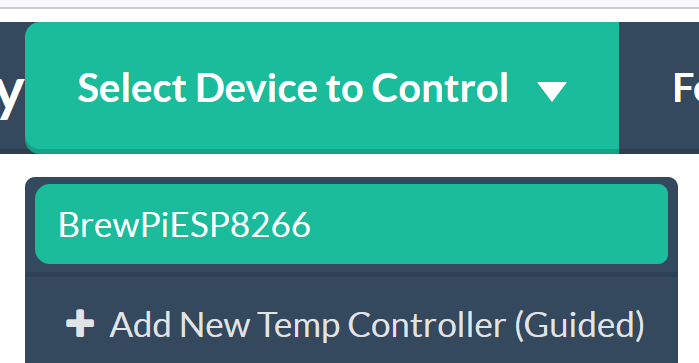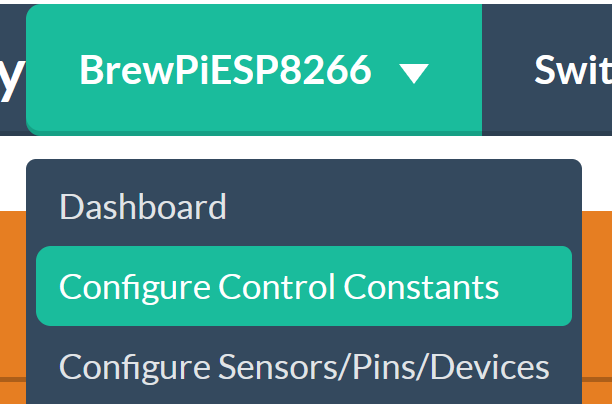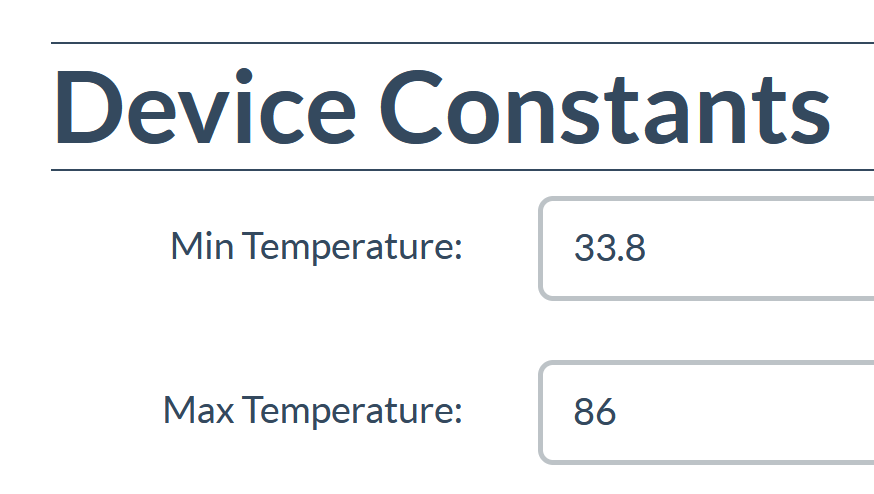dirkomatic
Well-Known Member
Just going to remove the installation and install the docker version. I'm not going to lose anything valuable....

Any suggestions on how to remove this error message?
Also what exactly is the Docker version and will I have that if Ive updated everytime Ive been advised there was an update?
Thanks for the info mate. Ive been getting that error for ages everytime I start Fermenrack and it is from an ispindel gravity sensor I tried setting up once back when I first installed fermentrack. I tried removing it and re adding it but obviously didnt remove the original one properly. I will follow your instructions..cheers again.Error messages are stored in cookies that are on your local browser. You should be able to dismiss the message after it appears and it should go away unless it gets generated again.
That particular message is generated when you attempt to access the gravity dashboard for a sensor that doesn't exist in the database. It shouldn't reappear unless you specifically try to access a sensor's dashboard, but it's worth checking if the objects in the database are consistent. If you keep encountering it, try logging into the Django admin (Gear Icon > Django Admin button) and click on the "iSpindel Configurations" and "Tilt Configurations" links. If you see any listed that you don't see on the list in Fermentrack, delete them. Then go back to the Django admin, and check the "Gravity Sensors" link, and do the same.
There are two main types of Fermentrack installations now: Docker (containerized) installs and non-docker (non-containerized) installs. The docker version packages Fermentrack and its requirements into a "container" that can then be downloaded/run as a single unit. By contrast, the non-docker version relies on the system installation of Python, locally installed packages, etc.
The advantage to the docker setup is that issues such as the ones @dirkomatic and @Lykke have been dealing with which are caused by environmental problems are generally eliminated at the cost of a larger download and a slight bit of additional overhead.
Error messages are stored in cookies that are on your local browser. You should be able to dismiss the message after it appears and it should go away unless it gets generated again.
That particular message is generated when you attempt to access the gravity dashboard for a sensor that doesn't exist in the database. It shouldn't reappear unless you specifically try to access a sensor's dashboard, but it's worth checking if the objects in the database are consistent. If you keep encountering it, try logging into the Django admin (Gear Icon > Django Admin button) and click on the "iSpindel Configurations" and "Tilt Configurations" links. If you see any listed that you don't see on the list in Fermentrack, delete them. Then go back to the Django admin, and check the "Gravity Sensors" link, and do the same.
There are two main types of Fermentrack installations now: Docker (containerized) installs and non-docker (non-containerized) installs. The docker version packages Fermentrack and its requirements into a "container" that can then be downloaded/run as a single unit. By contrast, the non-docker version relies on the system installation of Python, locally installed packages, etc.
The advantage to the docker setup is that issues such as the ones @dirkomatic and @Lykke have been dealing with which are caused by environmental problems are generally eliminated at the cost of a larger download and a slight bit of additional overhead.


I only have the 1 gravity sensor listed in both gravity sensors and Ispindel section which is the one Im using.
View attachment 728208View attachment 728209
No that didnt work either. I logged out and back in but when I reloaded the webpage I still have the same error message.I just read through the code, and Fermentrack actually stores messages in sessions, not in cookies like I thought. Try logging out of Fermentrack and back in. The log-out button is in the upper right to the left of the "gear".










Just today I found his about sensors not working at 5vI'M NOT CRAZY!
Seriously - I'm just glad I wasn't the only person experiencing that. It took me a few hours of swapping back and forth before I believed what I was seeing.
Not really. I mean it’s possible to mount a Linux partition on a PC, then stand up the database .... honestly it’s not trivial and I would expect it would take: 1) the data being recoverable and 2) someone that was familiar with the process a few hours if it was recoverable.
My opinion is it would be easier/quicker/more sure to start over.
This is why we always recommend people get good backups regularly and never power off the Pi without shutting it down.
This is how I make backups of my SD Cards -- using Win32 Disk Imager
https://www.howtogeek.com/341944/how-to-clone-your-raspberry-pi-sd-card-for-foolproof-backup/
Thanks I’ll try. I’m brewing this weekend so going to use it without a back up.Everything should be in the disk image. At this point I'd suggest plugging a keyboard and monitor into the Pi and seeing what occurs when it boots up on the copied card. It could be a bad card or something.
Yes - Windows only, but there has to be a Linux or Mac equivalent.
I've used either SD card and have no differences or trouble on either one. Doesn't matter which one is installed to run Fermentrack.
It's not really a backup, but a clone of the SD card at the time when I do the "backup" - an exact copy.
Done correctly, it should work. You’ll probably want to get a keyboard and monitor on there to see what’s going on.When I try the cloned SD card the rPi is not found in my list of devices on my home network and the usual IP address isn’t responding.
Is there something about fermentrack that prevents the back up? Do the WiFi settings have to be reconfigured after a backup?
Hey there - BrewPiLess is a different project - the thread is over here: BrewPi@ESP8266, no need of RPI and Arduino.@Thorrak please redirect me if on wrong thread but can't find a brewpiless thread.
I have struggled with a decent signal from my ispindel out of my ferment fridge, bargain stainless steel one but a good enough cage to stop regular wifi to my access point / router upstairs. Works great if i park a second router outside the fridge but trailing cables a pain.
I saw this ( briefly discussed on the ispindel thread about month ago )
https://pizzvopyfgp6oerh6v5bvte344-...1/03/repetidor-ispindel-con-display-oled.htmlTranslation from spanish not super good but enough, I wanted to use this to have a fermentation controller ( not got the relays for that yet ) and also as a WIFI relay/booster and another gadget with the display.
I assembled it last pm and installed the software my first efforts unsuccessful until I swapped out the esp8266 for another and then it was recognised and all loaded okay.
I have managed to get a test ispindel to connect to it and see temp and gravity change.
But what I also want to do is use it as an access point for the other ispindels which use brewspy.
I can see the brewpiless network and can log onto it with a device such as phone but can't get any WWW access from there.
I have set a fixed ip for the repeater on my network but am at a loss at the network aspects.
I've just moved from Brewpiless (due to constantly losing wifi and a lack of support and development) and have moved to fermentrack.
Aside from losing a few things I really liked on BPL like beer profiles via gravity (amazing for lagers and the fact I work away) and auto spunding, I'm finding fermentrack to be a much nicer, prettier, and more importantly, stable, environment.
One thing I don't seem to be able to find though, is where I can change the chamber's maximum temperature.
Currently, it seems that 30C is as high as it can go and as I use this for beer and spirits, the ability to ferment at 35+ is nice.
Does anyone know where I can change this?
Gravity-based beer profiles are coming (though I won't promise when)!
Unfortunately, I don't recall off the top of my head whether the min/max temp settings are part of the "control settings" options (which is user-configurable but isn't currently exposed in Fermentrack) or part of the hard-coded temps in the firmware. If it's the former, then I can try to expose that in Fermentrack & allow for control. If it's the latter, then you'll need a recompiled firmware with different temp limits.
Unfortunately, I'm on vacation with a laptop that doesn't have my BrewPi firmware development environment loaded on it and can't check easily to let you know - tag me again this coming Sunday when I'm back and I'll take a look and find out.
Unfortunately, I don't recall off the top of my head whether the min/max temp settings are part of the "control settings" options (which is user-configurable but isn't currently exposed in Fermentrack) or part of the hard-coded temps in the firmware. If it's the former, then I can try to expose that in Fermentrack & allow for control. If it's the latter, then you'll need a recompiled firmware with different temp limits.



Well that's embarassing.I want you guys to pay attention to the BrewPi guy supporting Fermentrack.
Select the device to control:
View attachment 732545
Then select Configure Control Constants:
View attachment 732546
Then you can define min and max temps:
View attachment 732547